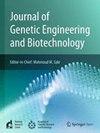小干扰RNA:从设计到治疗癌症
IF 2.8
Q3 Biochemistry, Genetics and Molecular Biology
Journal of Genetic Engineering and Biotechnology
Pub Date : 2025-04-03
DOI:10.1016/j.jgeb.2025.100484
引用次数: 0
摘要
癌症已成为世界范围内一个重要的公共卫生问题。它是一组疾病,通常是由涉及分化、细胞增殖、细胞周期调节和DNA修复的多种细胞通路失调引起的。这些破坏主要是由导致不受控制的生长和肿瘤形成的基因突变和表观遗传改变引起的。靶向治疗是克服常规治疗不足的一种精确有效的治疗策略。RNA干扰(RNAi)是一种基因沉默机制,具有针对疾病相关基因的不可思议的能力。小干扰RNA (siRNA)是RNAi的关键组成部分,在沉默癌基因和抑制癌症进展方面显示出前景。然而,siRNA的治疗应用面临着一些挑战,如细胞摄取不良、半衰期短、内体逃逸、免疫系统激活和脱靶。应对这些挑战的策略是优化siRNA的设计、先进的递送系统和化学修饰,以提高细胞摄取和防止降解。本文综述了siRNA在癌症治疗中的治疗潜力,并讨论了siRNA的作用机制、siRNA中的障碍以及克服这些障碍的策略。这篇综述揭示了目前基于sirna的癌症治疗的临床试验,以及结果和局限性。本文章由计算机程序翻译,如有差异,请以英文原文为准。
Small interfering RNA: From designing to therapeutic in cancer
Cancer has become a significant public health concern worldwide. It is a group of diseases, often resulting from the dysregulation of multiple cellular pathways involved in differentiation, cell proliferation, cell cycle regulation, and DNA repair. These disruptions are primarily caused by genetic mutation and epigenetic alterations which lead to uncontrolled growth and tumor formation. Targeted therapy is a precise and effective strategy to overcome the shortcomings of conventional therapy. RNA interference (RNAi) is a gene-silencing mechanism that has an uncanny ability to target disease-associated genes. Small interfering RNA (siRNA) is a key component of RNAi and has shown promise in silencing oncogenes and inhibiting cancer progression. However, the therapeutic application of siRNA faces several challenges such as poor cellular uptake, short half-life, endosomal escape, immune system activation, and off-target. Strategies to address these challenges are optimized designing of siRNA, advanced delivery systems, and chemical modification to improve cellular uptake and protect from degradation. This review focuses on the therapeutic potential of siRNA in cancer treatment and discusses the action mechanism of siRNA, barriers in siRNA, and strategies to overcome them. The review shed light on the current clinical trial of siRNA-based cancer therapy, along with outcomes and limitations.
求助全文
通过发布文献求助,成功后即可免费获取论文全文。
去求助
来源期刊

Journal of Genetic Engineering and Biotechnology
Biochemistry, Genetics and Molecular Biology-Biotechnology
CiteScore
5.70
自引率
5.70%
发文量
159
审稿时长
16 weeks
期刊介绍:
Journal of genetic engineering and biotechnology is devoted to rapid publication of full-length research papers that leads to significant contribution in advancing knowledge in genetic engineering and biotechnology and provide novel perspectives in this research area. JGEB includes all major themes related to genetic engineering and recombinant DNA. The area of interest of JGEB includes but not restricted to: •Plant genetics •Animal genetics •Bacterial enzymes •Agricultural Biotechnology, •Biochemistry, •Biophysics, •Bioinformatics, •Environmental Biotechnology, •Industrial Biotechnology, •Microbial biotechnology, •Medical Biotechnology, •Bioenergy, Biosafety, •Biosecurity, •Bioethics, •GMOS, •Genomic, •Proteomic JGEB accepts
 求助内容:
求助内容: 应助结果提醒方式:
应助结果提醒方式:


